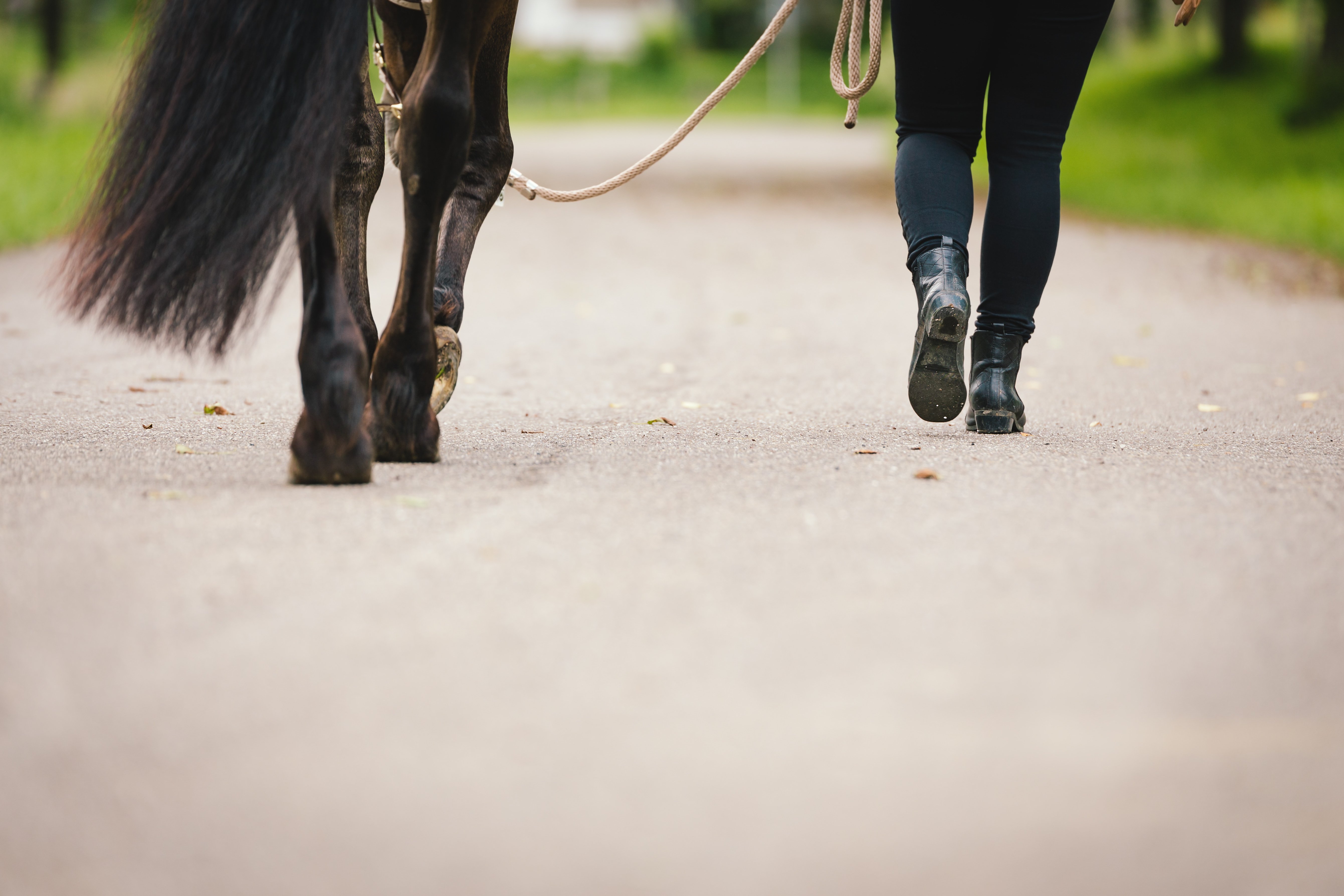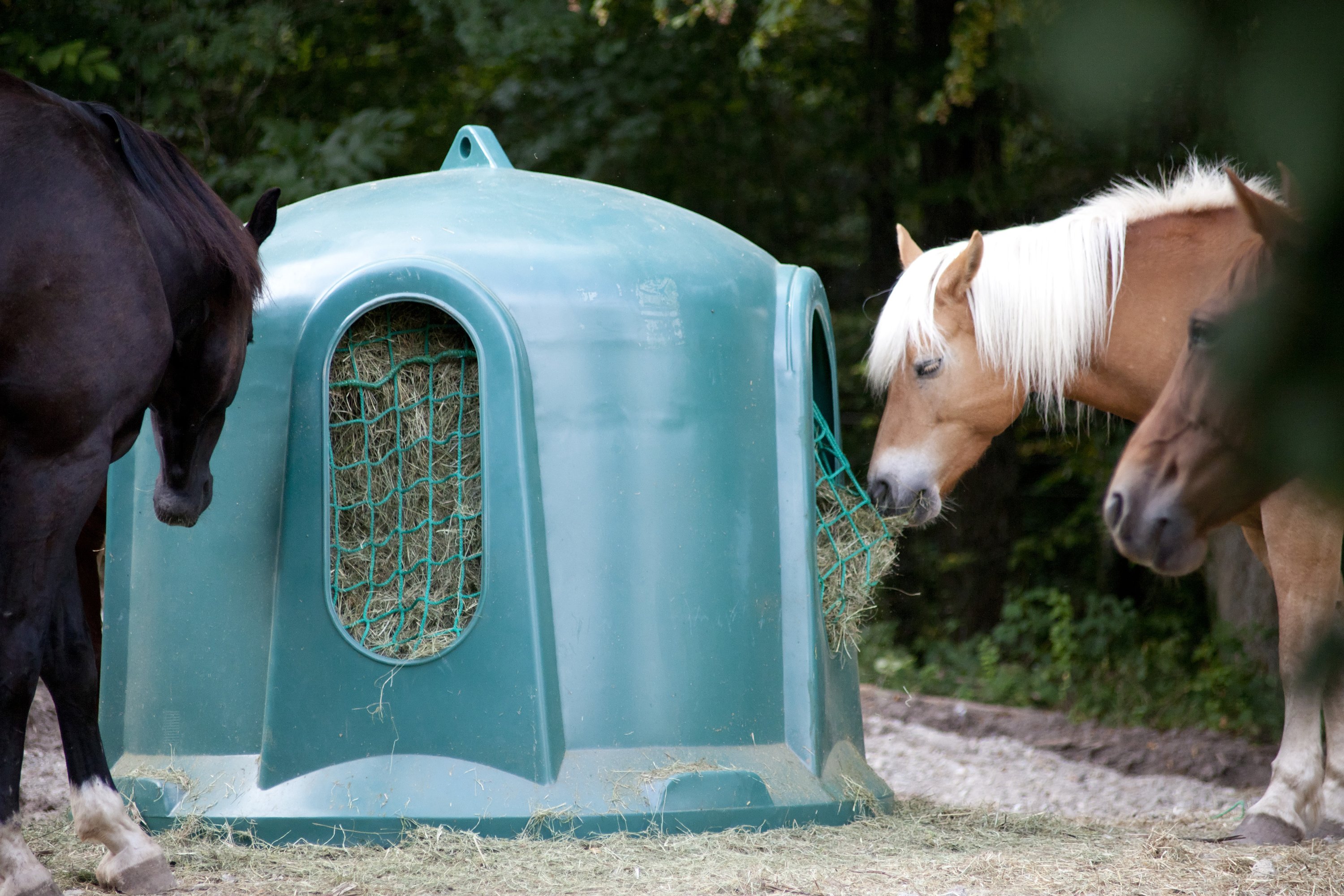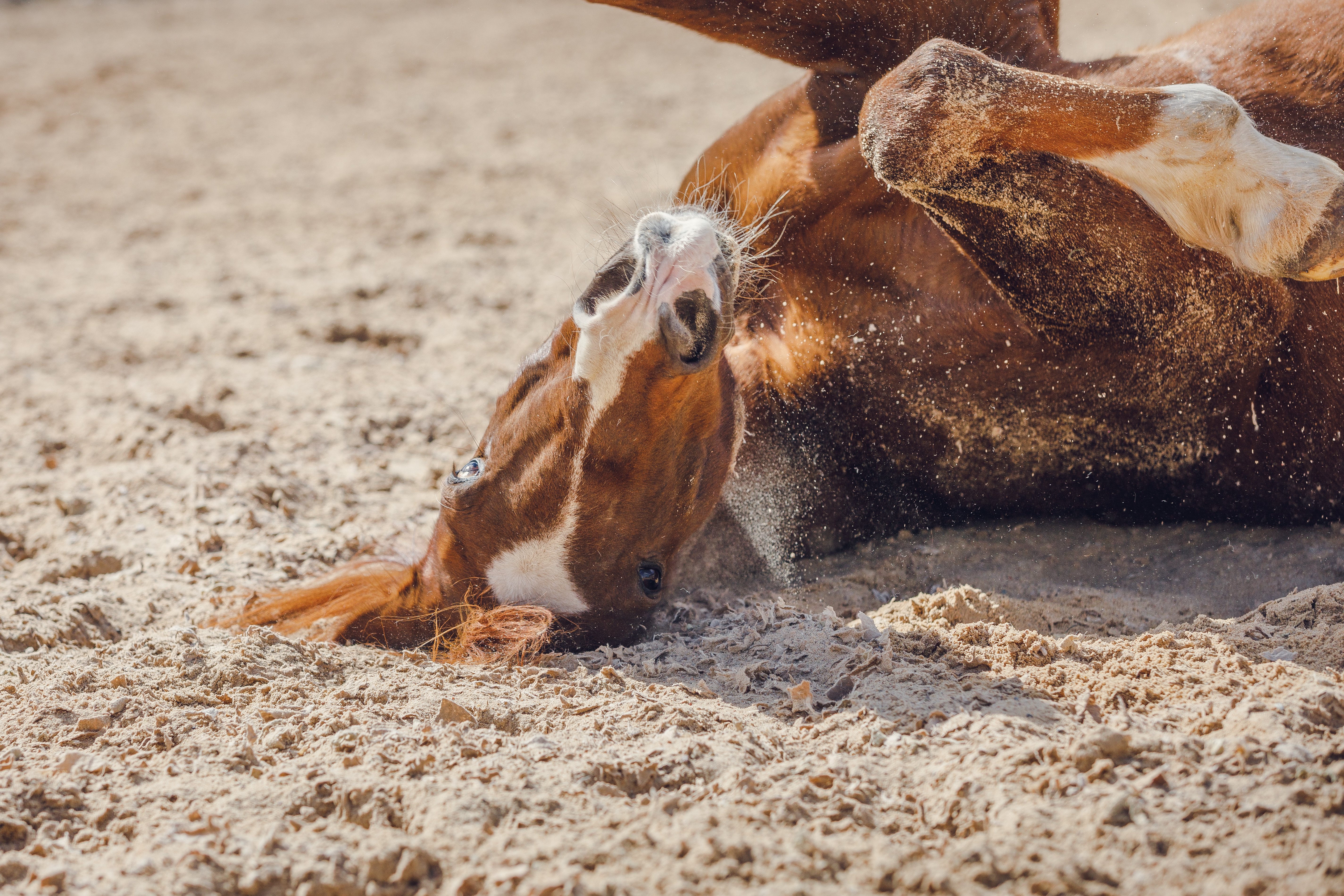How should horses with gastric ulcers be fed?
3 min. read time
Audio version – listen to this article easily
We love the summer. Sunny weather, rides, the horses are out in the pasture and we can put our feet up and relax. Winter, on the other hand, presents many riders with the challenge of keeping their horses occupied in a meaningful way so that they stay fit, healthy and balanced. In most stables, the amount of exercise is significantly reduced compared to summer. We have put together 10 tips on how you can keep your horse with stomach ulcers busy in winter.
Boredom, like stress, can lead to stomach ulcers. To minimise this risk, you can help by making your horse's living space more attractive and exciting. Horses can become bored or stressed not only in a box, but also in a group setting. It is therefore important to respond to your horse's individual needs and to observe in which housing system your horse feels comfortable and safe.
It seems obvious and yet it should not go unmentioned here: Exercise is the be-all and end-all. Free exercise is particularly important, including letting the horse run or letting it out in a winter pasture or paddock. Riding and lunging are not included. Daily exercise is therefore recommended. Your horse can organise itself here, i.e. it can choose between resting, moving and social contact, provided there are other horses on the exercise area. Exercise keeps the body going and can contribute significantly to maintaining good health.
Do you currently want/need to give up riding? Nevertheless, you have many opportunities to offer your horse variety. You can take your horse for a walk in the countryside, use a horse walker (if available), do calmness training, try out equine kinetics or teach your horse new things during ground work. This not only strengthens your relationship with your horse, but also keeps it physically and mentally fit.

Each type of bedding has its advantages and disadvantages. Straw is still the most common type in Germany. The disadvantage is dust pollution. No horses should be in the stables during mucking out. If this service is carried out by stable staff, you naturally have less control. If you muck out yourself, you can make sure that the windows and doors are open next time and that your horse is not directly affected by the dust that is stirred up.
In addition to the absorbency and lying comfort of straw, another advantage is that it keeps horses occupied. Horses often eat straw or nibble on it. As straw has a very high rough fibre content, this can increase saliva production, which is particularly good for your horse with stomach ulcers, as the bicarbonate contained in the saliva acts as a natural stomach acid buffer. If your horse is bedded with straw, water should also always be available to prevent constipation colic.
If your horse is on shavings for health reasons, e.g. because it is sensitive to dust, and has no straw available, you should pay even more attention to ensuring that your horse has sufficient roughage available. Roughage has many positive aspects. On the one hand, as mentioned above, it promotes saliva production, and on the other, it keeps your horse occupied. Horses eat much longer on one kg of hay than on concentrated feed, so they are busy eating for longer.
If your horse is in a pasture in summer, it can spend the whole day foraging, whereas in winter the roughage is often rationed. We recommend feeding several portions throughout the day to minimise breaks in feeding. The evening portion should be the largest, so that your horse is kept busy at night and has food available. At least 1.5 kg per 100 kg body weight of the horse should be fed per day. For a 600 kg horse, that is approx. 9 kg of roughage.
The term "slow feeder" comes from the English and means something like "eat slowly". The aim is to offer horses a permanent feeding opportunity. Slow feeders are available in a wide variety of designs, such as racks with hay nets, hay sacks or hay balls. If your horse is in a paddock in winter, hay racks are a good way to ensure continuous feeding. Nets can also be thrown over the hay bale. The meshes allow horses to pull the hay more slowly and keep them busy eating for longer.
A nice side effect: the paddock is relatively less soiled with hay, as less is pulled out of the rack and trampled on. The topic of "hay nets" is a controversial one in the equestrian world. Horses can get tangled up in the mesh and wear down their teeth on the material. As the owner, you have to weigh up the pros and cons.
 t
t
Many horses inevitably spend more time in the stable in winter than in summer. The winter weather has a major impact on the ground conditions, so it is not always possible to guarantee a run. In addition to a cosy and safe place to sleep and eat, a box or shelter offers even more possibilities. If permitted by the stable owner, you can also install activity material.
Suitable stimulants for horses with stomach ulcers include:
Safety has the highest priority. Sharp-edged and unhealthy or even toxic materials should be avoided. The openings of feed balls or hay nets should be smaller than 5 cm or larger than 35 cm in diameter so that your horse cannot get a hoof caught in them.
You don't want to buy a toy, but build or make your own?
Branches are particularly suitable for this. Drill several holes in a long branch and stick roots through them, for example. Your horse will be busy proving its skills and what is more motivating than a tasty treat? You can find out which fruit and vegetables are suitable for this here.
We riders pay meticulous attention to the quality of the riding arena or indoor arena surface, and it is not only of great importance here. The surface also makes all the difference in paddocks. If the ground is too wet, deep and muddy, it can be observed that horses move less and roll less often. Horses prefer dry sand. Nowadays, there are a variety of options when choosing a surface. The focus should be on stability, slip resistance and water permeability.

Does your horse have access to a paddock by the hour, but does little or no exercise in the paddock? Create incentives for movement by placing the drinking trough and roughage as far away from each other as possible. Horses are naturally curious and have a strong exploratory behaviour, which they want to live out. Wood, balls or feeding opportunities are also ideal for this.
The opportunity to roll around or rub against brushes is also very popular. Different surfaces in the paddock or tree trunks and poles can improve your horse's skills. But be careful! Horses need plenty of space for this. The paddock should not be too full or contain tripping hazards.
That brings us to the next point. Horses are exercise animals and they need space for this.
A box should have the dimensions (2 x stall height)2 . For a horse with a height of 1.70 m, this would be just under 12 m2. The dimensions for a paddock are 150 m2 for up to two horses and an additional 40 m2 for each additional horse. Horses should therefore be given the opportunity to move freely in all three basic gaits.
Horses are social animals. You can observe grooming and play behaviour within the herd. If contact with conspecifics is limited, behavioural disorders such as bucking or weaving can develop. Other horses should therefore at least be in visual, auditory and olfactory contact. In group housing, attention must be paid to the social structure of the horses. Herd constellations should always be reconsidered if it becomes apparent that horses are experiencing stress. Stress has the greatest influence on the development of gastric ulcers. A completely stress-free life is certainly not possible, but you should nevertheless pay attention to the well-being and behaviour of your horse and make changes to the husbandry if necessary.
You can install activity material in the box and in the run to minimise your horse's boredom. It's not the quantity of toys that has the desired effect. It is better to alternate the toys than to hang three different ones in the box. Safety is still the top priority. Injuries caused by a flying ball or other toys should be avoided at all costs. Are you offering your horse a colourful mix of variety, but it is still bored, apathetic or even nervous? Then you should monitor the situation and contact your vet if necessary.
You can find lots more information about feeding horses with stomach problems on our Feeding horses with stomach problems page.
Equine 74 Gastric
Buffers the excess acid in the horse's stomach instead of blocking it.
Equine 74 Stomach Calm Relax
Supports the nervous horse stomach in stressful situations.